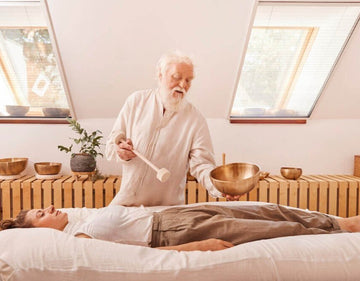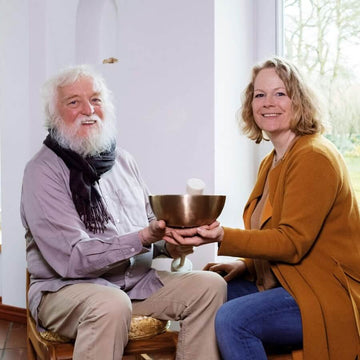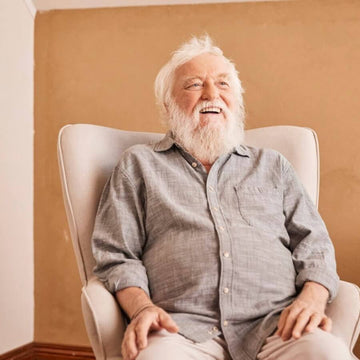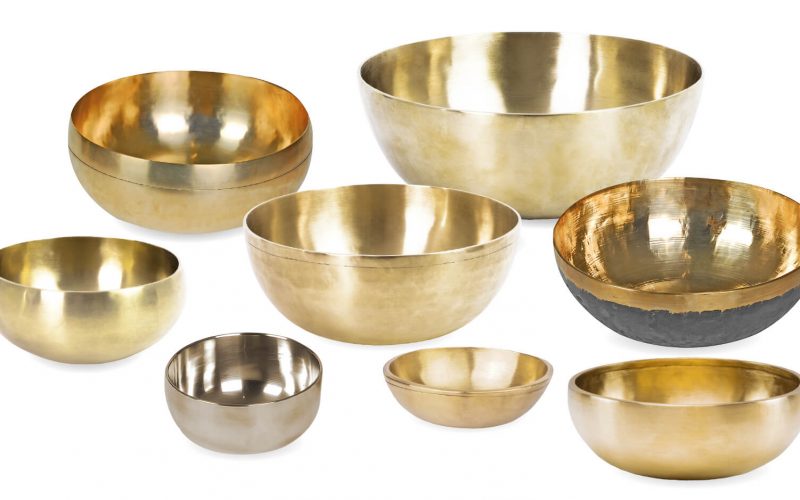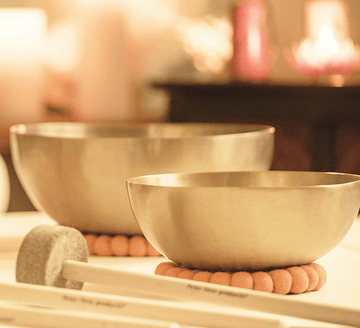
The most important facts in brief
- There are many different types of Singing Bowls. In this guide, we list the most important types that are tailored to the needs of sound practice.
- The therapeutic singing bowl is the jewel among the Singing Bowls. It is mainly used in professional sound work.
- Singing Bowls differ in shape, size and material used.
- The quality of the Singing Bowl is decisive for its sound.
- Singing Bowls are used in meditations, sound journeys, concerts and sound therapy.
What is Singing Bowls and where does it come from?
Originally, Singing Bowls came from the East Asian region - from China, Japan and Burma. Their predecessors were the so-called standing bells. These were hemispherical bronze vessels that stood on the floor with the opening facing upwards and were struck with a wooden clapper. Depending on where they were used, they developed into the various types of Singing Bowls that we know today. Most Singing Bowls are made of brass or bronze.
The Singing Bowls that are available in the West today mostly come from India, Nepal, Tibet, Japan or China and sometimes vary greatly in quality. This mainly affects their sound and vibration behavior. In most cases, Singing Bowls are used as instruments for meditation, sound massages, sound therapies, concerts or sound and fantasy journeys.
Peter Hess has been developing the sound massage, in which Singing Bowls is positioned and played on and around the clothed body, for people in the West since 1984 based on his experiences in Nepal - it is therefore a Western method.
Which Singing Bowls are the best?
The high-quality therapeutic singing bowls produced by Peter Hess® are considered the "jewel of Singing Bowls". Inspired by the healing power of the sounds that Peter Hess experienced on his travels to Nepal, he began to build up his own production of Singing Bowls in 1989. To this day, Peter Hess® Singing Bowls are subjected to the highest quality criteria so that they have an incomparable quality of sound and vibration.
Only pure, high-quality metals (copper and tin) are used in Peter Hess® singing bowl production and no metals from waste products or scrap. The bowls consist to a large extent of tin. This high-quality raw material is often reduced by other manufacturers or replaced by lead because tin is much more expensive.
Peter Hess® Therapy Singing Bowls are forged from a cast blank. The elaborate forging technique ensures that the bowls vibrate much longer and more evenly. Even though a good pre-selection takes place in Nepal and India, some Singing Bowls do not meet the requirements for the "Peter Hess® Therapy" quality seal. For this reason, all bowls in Germany are intensively tested again for quality and classified into different quality levels.
How to find the right Singing Bowl for you
- Think about the main purpose for which you want to use Singing Bowl .
- Listen to Singing Bowls samples online to find out which sounds and frequencies you like.
- Pay attention to quality and check the materials used and the manufacturing process in particular - both have a significant effect on the sound.
- Set a budget that you are prepared to invest in your new instrument.
- If you are unsure, speak to an expert and get advice on the different types of Singing Bowls.
What types of Singing Bowls are there?
To find out which Singing Bowls is best for you, you need to understand what types of Singing Bowls there are and what differences the individual Singing Bowls have. The pioneer in working with Singing Bowls, Peter Hess, has developed various types of Singing Bowls since founding his first own productions in 1989, which are optimally tailored to the needs of sound practice. Be it for sound massage, sound meditation, fantasy journeys or concerts. They all impress with their incomparable sounds that touch the body, mind and soul. In terms of the type of singing bowl, a basic distinction must be made between bowls that are cast and those that are forged in the traditional way.
Forged Singing Bowls
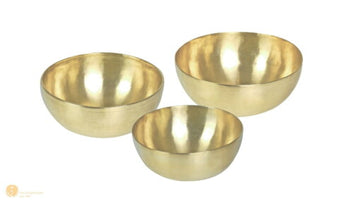
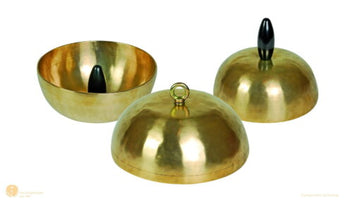
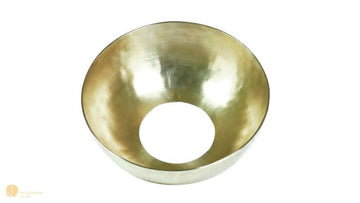
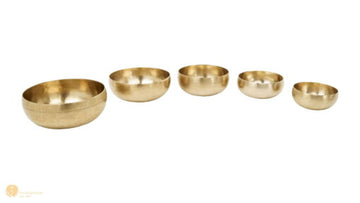
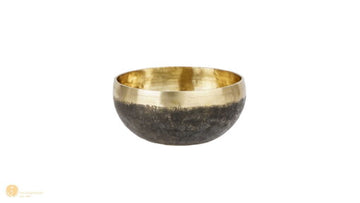
Cast Singing Bowls
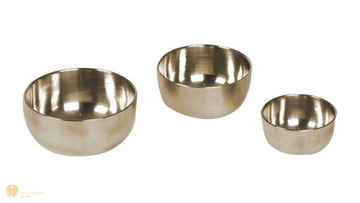
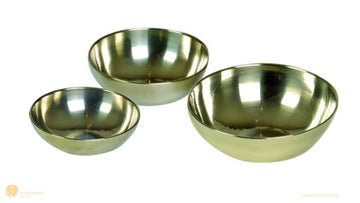
Further Singing Bowls types
With the increasing interest in Singing Bowls , a growing market for Singing Bowls of different shapes, sizes and sound and vibration quality has developed. Only a few of these instruments are suitable for sound work on the body - as practiced in the Peter Hess® sound methods and especially in sound massage.
The most widespread type of singing bowl, also known as the classic Singing Bowl, is the so-called Tibetan Singing Bowl. However, the name is misleading as these bowls are usually made in India or Nepal. This type of singing bowl was the model for the Peter Hess® Therapy Singing Bowl developed by Peter Hess for sound massage.
Note
There are considerable differences in quality between the many different Singing Bowls products on the market. This guide will help you to find out which Singing Bowls is the best for you. You can convince yourself of the first-class quality of Peter Hess® Singing Bowls in our article "Production of Peter Hess® therapy Singing Bowls".
Types of singing bowls - which Singing Bowl for which part of the body?
The therapy singing bowl series is available in different types of singing bowls, which address specific areas of the body particularly well and can be used by professionals in a targeted manner. The individual types each have a characteristic shape and size as well as sound and vibration quality.
Peter Hess has succeeded in optimizing the manufacturing processes of Singing Bowls in such a way that certain types of singing bowls have been created that appeal particularly well to certain areas of the body. To put it simply, the lower sounds appeal primarily to the lower parts of the body, while the higher sounds are particularly perceptible in the upper half of the body.
Note
As the Singing Bowls are made by hand, each bowl is unique. This uniqueness is also reflected in the sound experiences - they are always individually different, just as every person is unique.
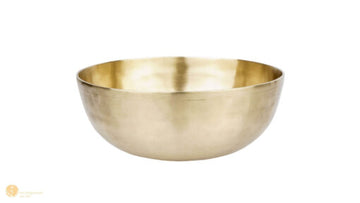
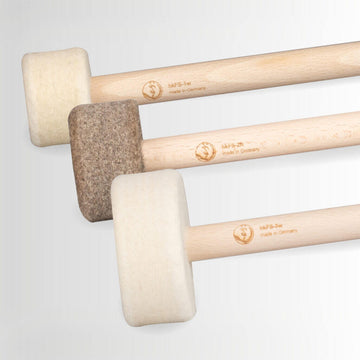
Tip
For professional sound work, but above all for private use, we recommend a mallet set consisting of a large, medium and small felt mallet, each with a different degree of hardness. This opens up a particularly wide range of possible applications for these Singing Bowl, especially in the context of self-application of sound exercises. The universal bowl is also one of the three most important Singing Bowls for professional sound work.
Small and large bowl
With its deep tones of 100 to 1,000 Herz, the pelvic bowl is particularly appealing to the lower abdomen and lower back. Its sound is often described as particularly "grounding". Its deep sounds, which can be heard through strike with a large felt mallet, are particularly appealing to the pelvic area. If, on the other hand, this type of bowl is played with a medium-hard felt mallet, frequencies are heard that are perceived as particularly pleasant and intense in the solar plexus area (area above the navel).
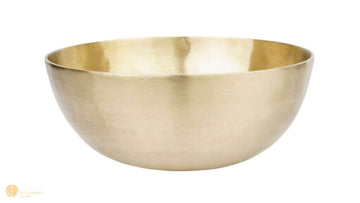
Small and large heart-shaped bowl
The sound of the heart bowl is often described as very warm and bright. As the heart area is a particularly sensitive part of the body, the vibrational behavior of this bowl was designed to sound rather gentle. Here too, there is a large and a small version.
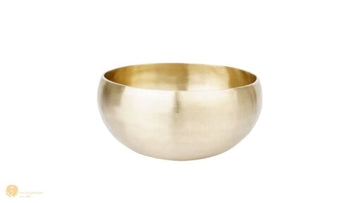
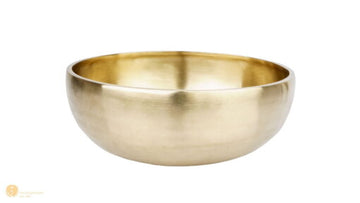
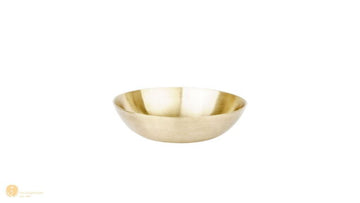
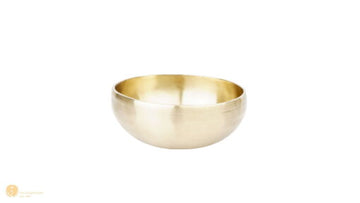
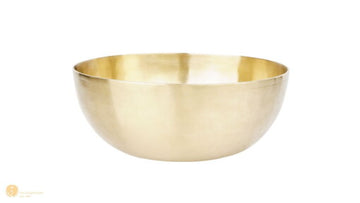
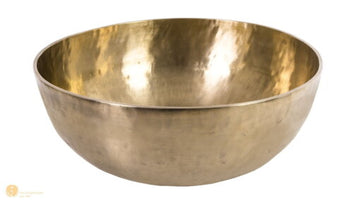

Tones and sound characteristics of Singing Bowls
The tones of the Singing Bowls are created when you place the Singing Bowl on the flat of your hand and strike it on the upper edge with a mallet or rub it with a friction mallet . Singing Bowls have a wide variety of tones and vibrations. Depending on the type of singing bowl and the mallet used, low or high tones are produced. The larger the Singing Bowl, the deeper its tone usually is.
Forged Singing Bowls transport the tones and vibrations better than cast Singing Bowls. The sound lingers longer and the vibrations can be felt on the body.
Tip
Felt mallets dampen the tones of Singing Bowl, which is particularly important for sound massage. This allows the sound to spread gently through the body and lead to deep relaxation.
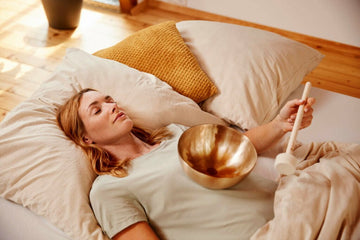
Sound Guide
Singing Bowl Application
To enjoy the unique sound experience of a Singing Bowl , the right application is crucial. We give you tips on how to make the most of the full sound spectrum of your Singing Bowl !
